Blog / 2008 / What Is the Value of Art?
February 23, 2008
Kristina’s mother is originally from Germany and her father emigrated from Iran. We played dress-up together when we were eleven and twelve, and we had a few classes together in high school. But when she walked into my studio to do the photo session and interview for the painting I would make, I had not seen her in ten years.
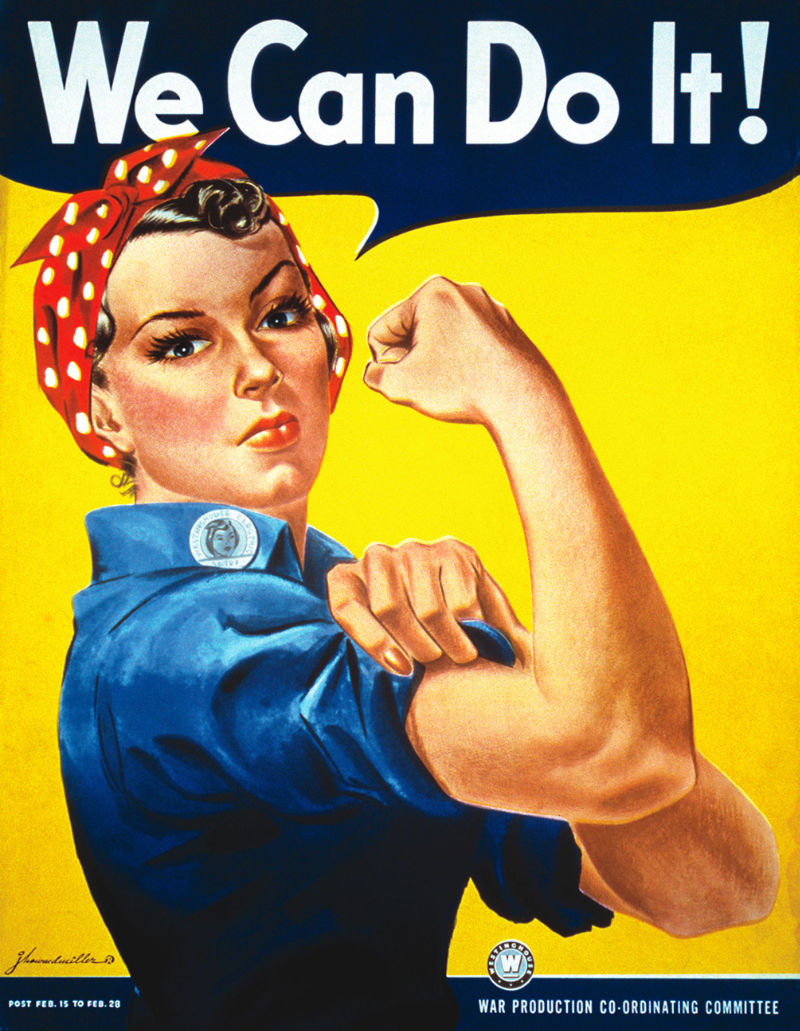
For the purposes of Apple Pie, I had decided to combine Kristina with Rosie the Riveter, though with a slight alteration. Raha The Riveter would be proof that Rosie isn’t the only one doing the riveting anymore.
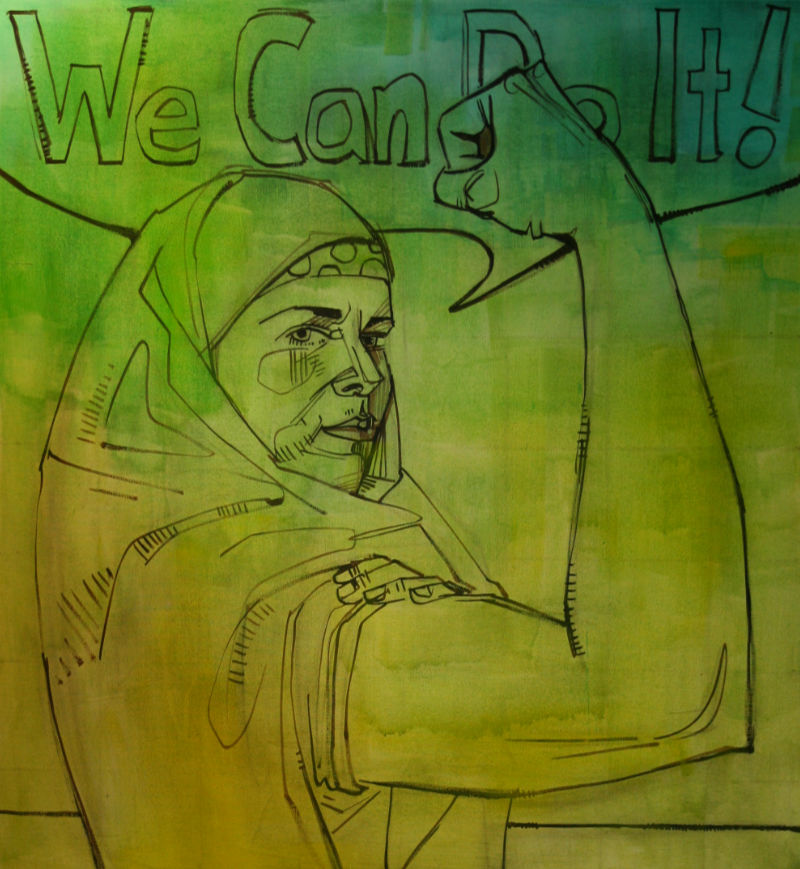
This is a first wash of color for my painting of Kristina. I prefer not to begin a piece with a white canvas.
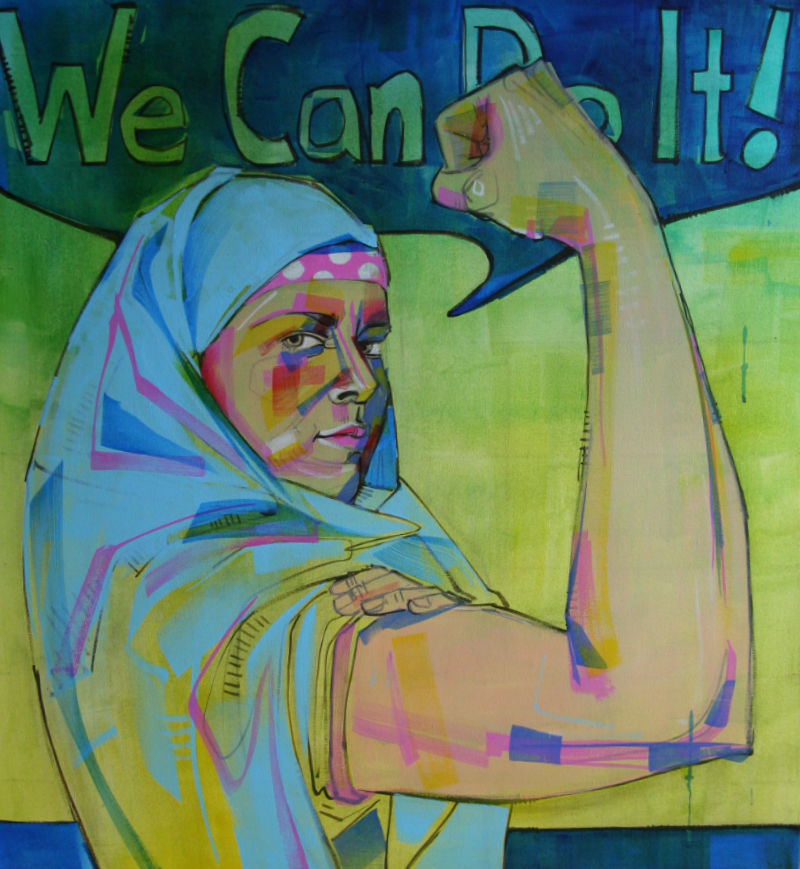
I’ve never been much of a fan of representing fabric with paint, so I was not looking forward to painting the headscarf. That said, my dislike of clothing wasn’t as acute as it used to be. A few years before starting on this painting, I got to a place where I wanted to have all my subjects to sit for me in the buff.
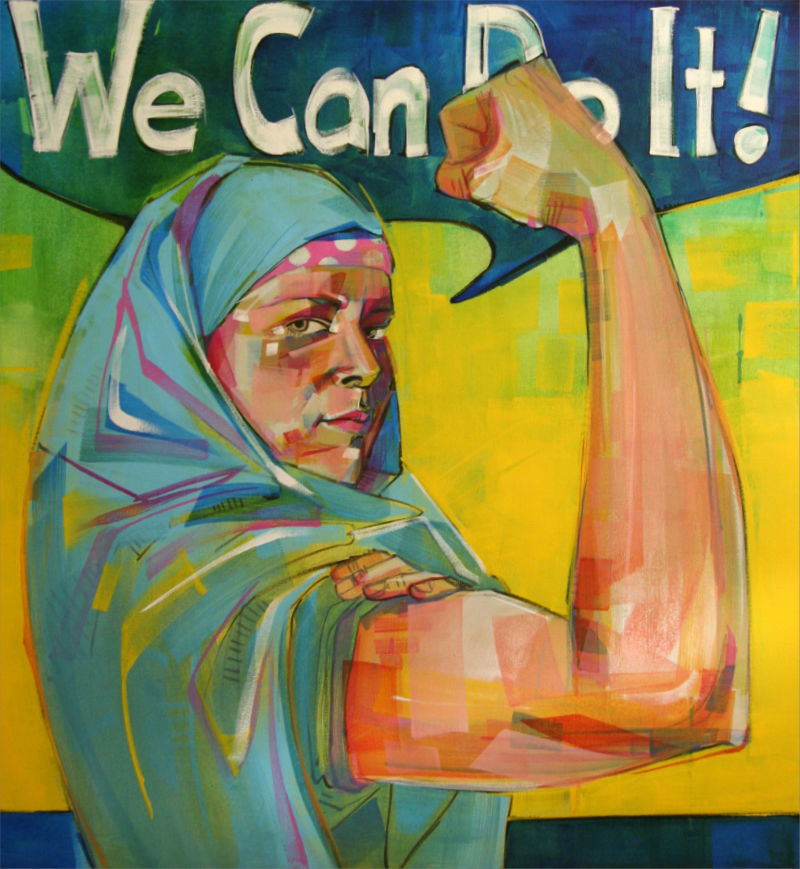
It wasn’t that I wanted to paint them as full nudes. It was more that I wanted to paint their shoulders without the suggestion of clothing, since the way we carry our shoulders says a lot about who we are. I ended up growing out of my strong dislike of fabric when I realized that a person’s choice of clothing for their sitting says a lot about them. And it’s not information I should leave out of a portrait.
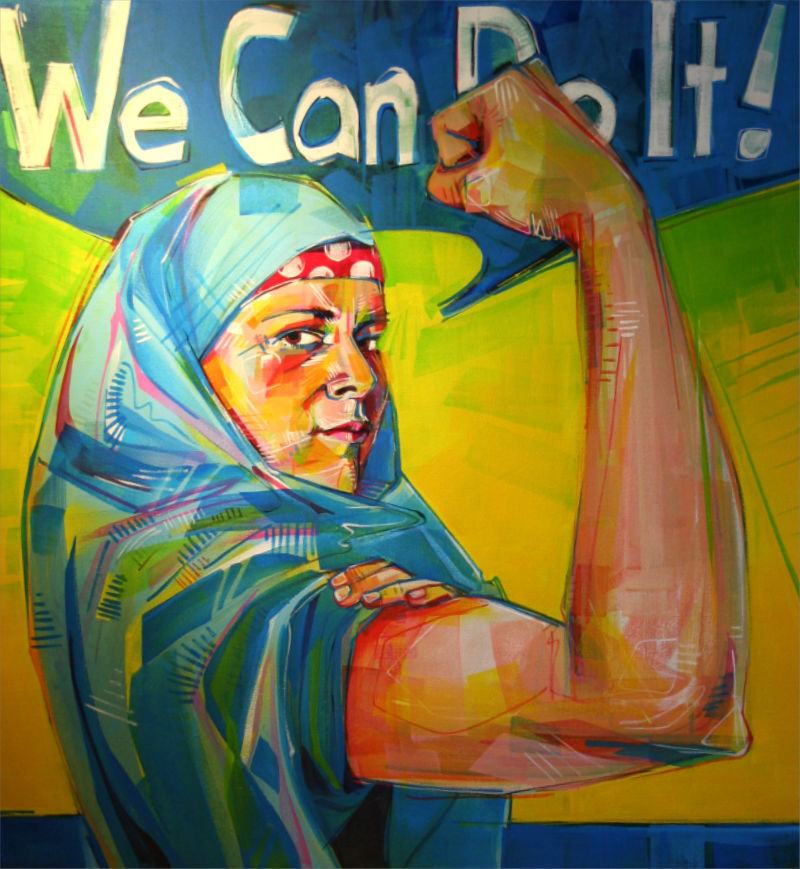
Also, there is a whole language to the way a person’s collar intersects with the skin of their neck. I know that sounds strange and I’m not entirely sure how to explain it, except in examples. Compare Frances’ collar-neck area with Curt’s. Their expressions are different, as are their sexes and ages, but there’s something in the way their clothing hides and reveals their bodies that speaks to the subtler differences between the two of them.
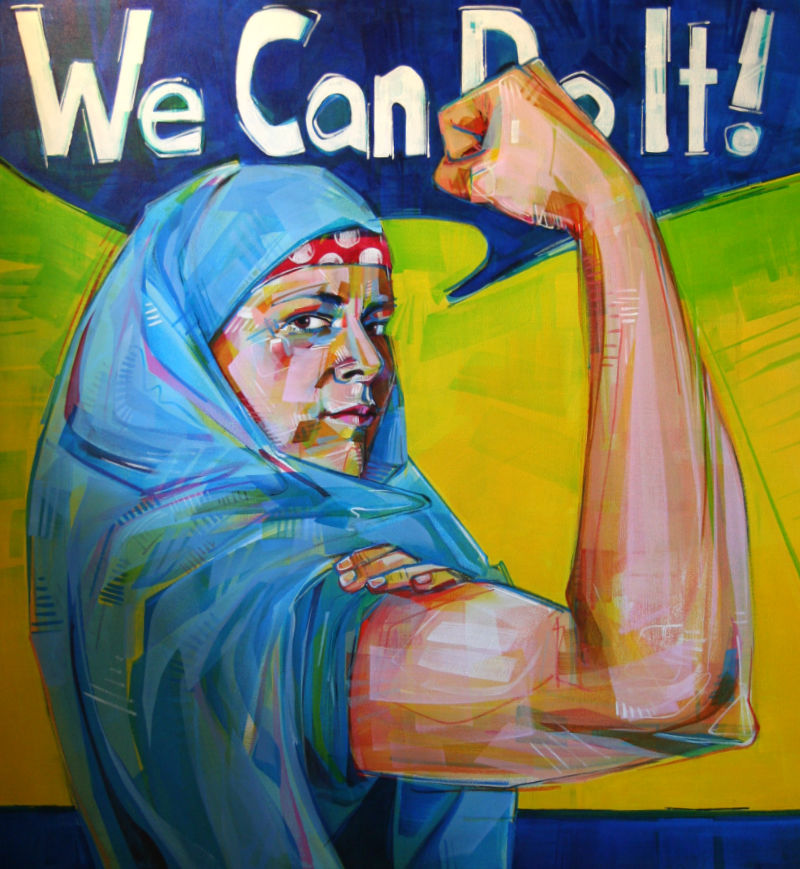
I started to think of the hijab in these terms. Though I missed the opportunities for expression that a person’s neck and shoulders allow, I realized that the headscarf allow me to focus the painting more on the gesture.
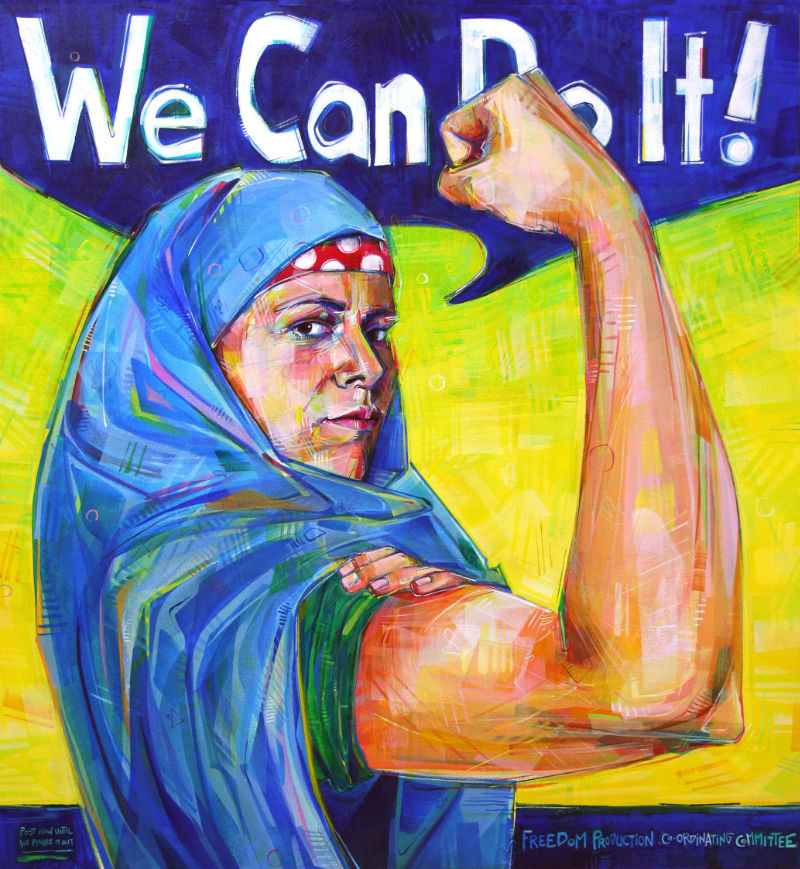
Raha the Riveter (German-Iranian-American, Kristina)
2008
acrylic on canvas
41 x 38 inches
I’m fairly certain that I’ve discovered the one, the only, the root value of art. It’s in a work’s ability to cause a conversation and be a catalyst for change.
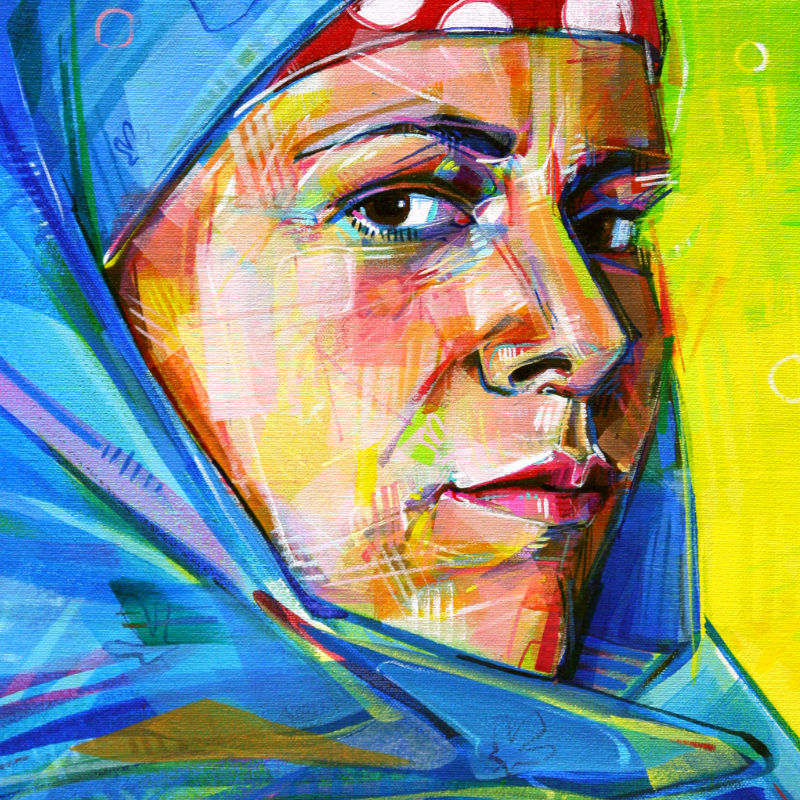
I have asked plenty of people what they think the value of art is. While they all have different ways of phrasing their responses, if you examine all the various definitions, they lead back to an ability to incite revolution—big or small, global and personal.
And the value of visual art specifically is in its immediate impact. No other artform has that. With words, a person has to read a whole sentence or paragraph or book before she-he can be affected by the whole thing. It’s a cumulative effect. With images, it’s the reverse. First, a person sees the whole, and then, hopefully, the layers of meaning that go into it.
It’s this aspect of visual art that I mean to more fully understand and employ in my Apple Pie series.
Maybe this post made you think of something you want to share with me? Or perhaps you have a question about my art? I’d love to hear from you!
To receive an email every time I publish a new article or video, sign up for my special mailing list.
If you enjoyed this post, Ko-fi allows you to donate. Every dollar you give is worth a bajillion to me!



